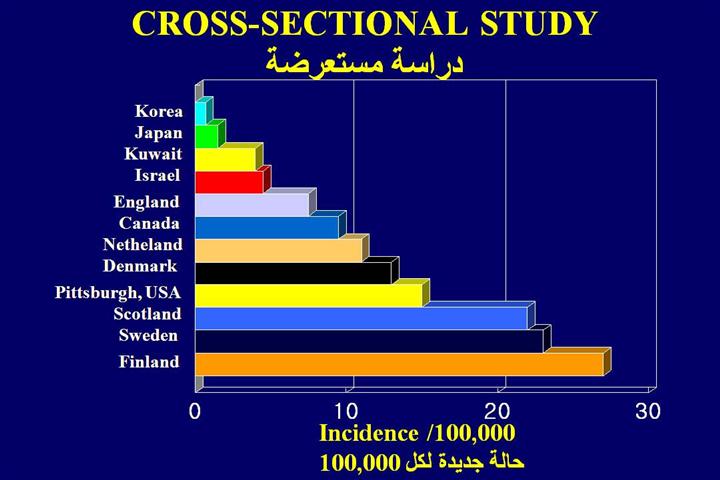 |
One of the best results from the cross-sectional study has been the
exposition of incidence rates. As shown on this slide that incidence rates
of IDDM varied widely. The lowest rate was reported from Korea, and the
highest from Finland. These differences are as much as 40 fold between the
two countries. Based on this cross-sectional study, we immediately noticed
that both genetic and environmental conditions should be regarded as risk
factors for IDDM. In these cross-sectional studies, we also note that IDDM
incidence is lower in Asia, moderate in North America, and higher in
Scandinavian countries.
من أفضل نتائج الدراسات المستعرضة هي عرض لمعدلات الإصابات الجديدة . و كما هو
مبّين في الرسم فإن معدل الإصابات الجديدة لمرض السكري المعتمد على الأنسولين
تتباين من دولة أخرى. فأقل معدل للإصابة كانت في كوريا بينما سجلت فنلندا أعلى
معدل للإصابة و الاختلاف بين البلدين تصل إلى 40 ضعف . و بناءً على هذه الدراسة
نلاحظ مباشرة أن عوامل جينية و بيئية يجب أن تعتبر من عوامل الخطورة للإصابة
بمرض السكري . و نلاحظ أيضاً أن معدلات الإصابة بالسكري تعتبر منخفضة في اسيا و
متوسطة في أمريكا الشمالية و مرتفعة في الدول الإسكندنافية. |
